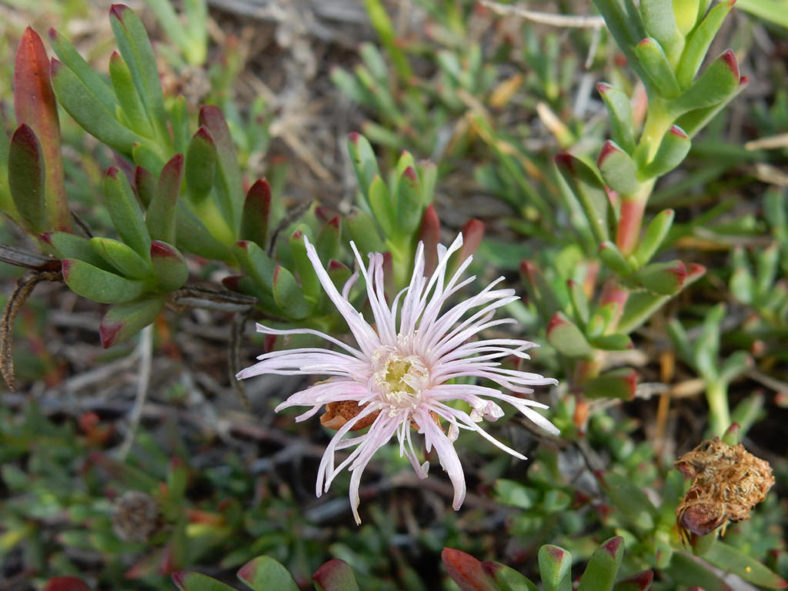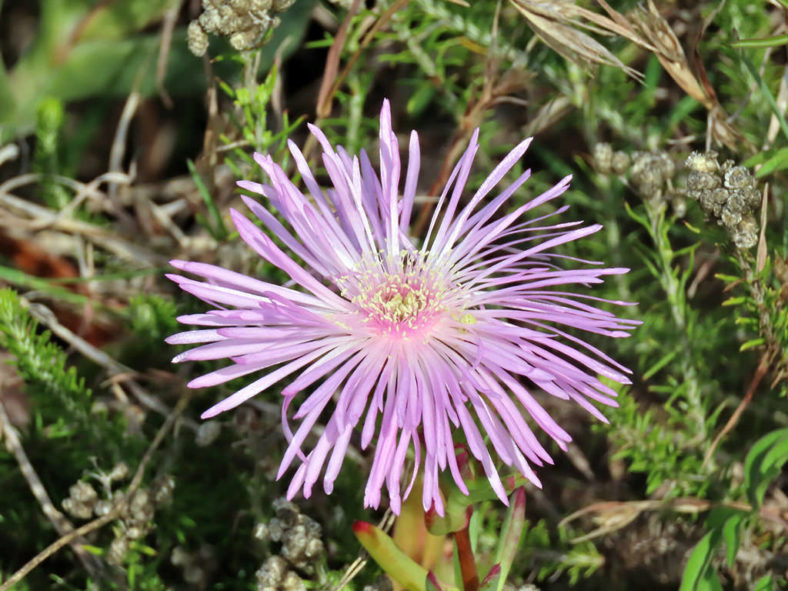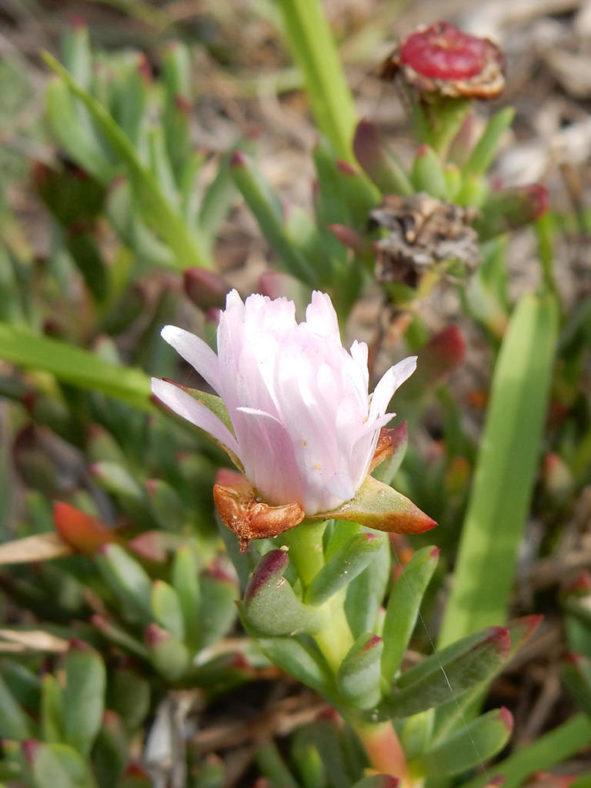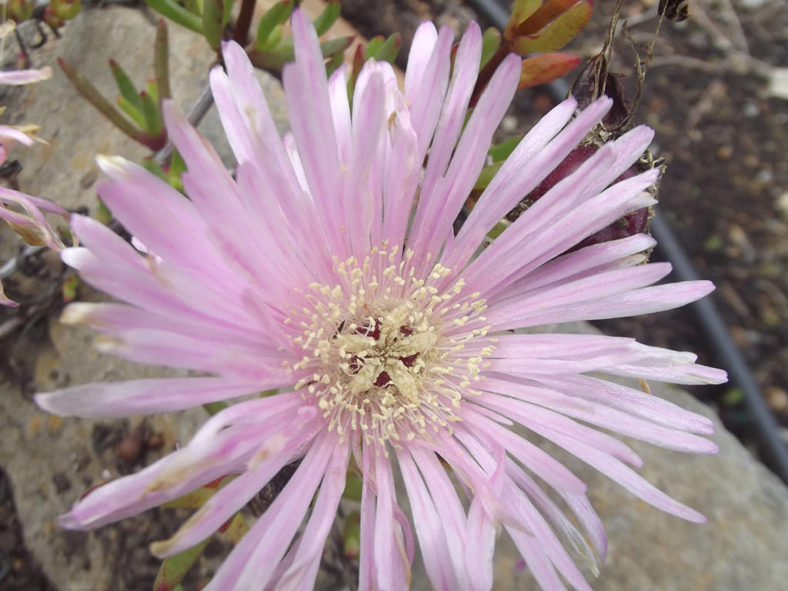Scientific Name
Lampranthus blandus Schwantes
Synonym(s)
Mesembryanthemum blandum
Scientific Classification
Family: Aizoaceae
Genus: Lampranthus
Etymology
The specific epithet "blandus" (pronounced "BLAN-dus") means "pleasant, seductive, flattering" and likely refers to the attractive appearance when this species is in bloom.
Origin
Lampranthus blandus is native to South Africa (Eastern Cape and Western Cape).
Description
Lampranthus blandus is a succulent shrublet with erect to decumbent branches that bear fleshy, trigonous leaves. It can grow up to 24 inches (60 cm) tall. The leaves can measure up to 1 inch (2.5 cm) long and 0.15 inches (0.4 cm) wide.
The white to pale pink flowers, which can reach up to 2 inches (5 cm) in diameter, appear solitary or in groups of 2 to 3 from mid-spring to early summer. The fruits are inverted cone-shaped, contain pale brown seeds, and can grow up to 0.5 inches (1.3 cm) long.

How to Grow and Care for Lampranthus blandus
Hardiness: USDA hardiness zones 9a to 11b: from 20°F (-6.7°C) to 50°F (10°C).
Lampranthus plants thrive in well-drained, poor soils and are suitable for sandy or rocky soils, although they will grow in almost any soil type. They tolerate salt exposure and thrive in coastal conditions.
Plant rooted cuttings in spring after the possibility of frost has passed. For trailing species, space the cuttings 6 to 24 inches (15 to 60 cm) apart, using closer spacing for quicker coverage. Dig a hole just a little larger than the roots at the cutting's base. Put the roots in the hole, cover them with soil, and tamp the soil firmly in place. For erect or mounding species, space them according to the mature dimensions of the particular species.
Water the plants immediately after planting, but let the top inch (2.5 cm) of soil dry before watering again. This method should be used throughout the first spring and summer. Once established, the plants are drought-tolerant and need watering only during extended dry periods.
Learn more at How to Grow and Care for Lampranthus.
Links
- Back to genus Lampranthus
- Succupedia: Browse succulents by Scientific Name, Common Name, Genus, Family, USDA Hardiness Zone, Origin, or cacti by Genus
Photo Gallery
Click on a photo to see a larger version.


